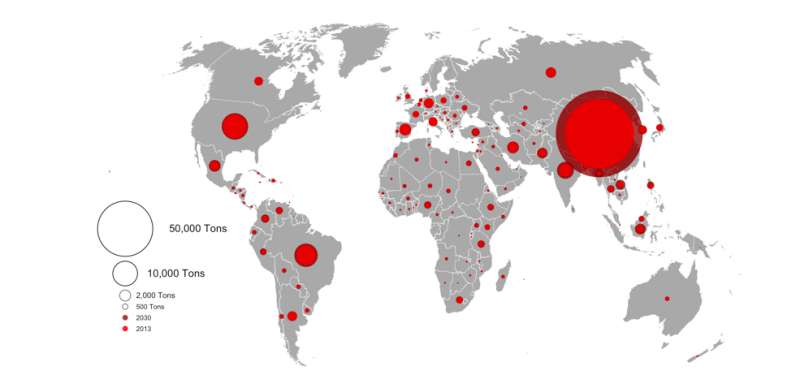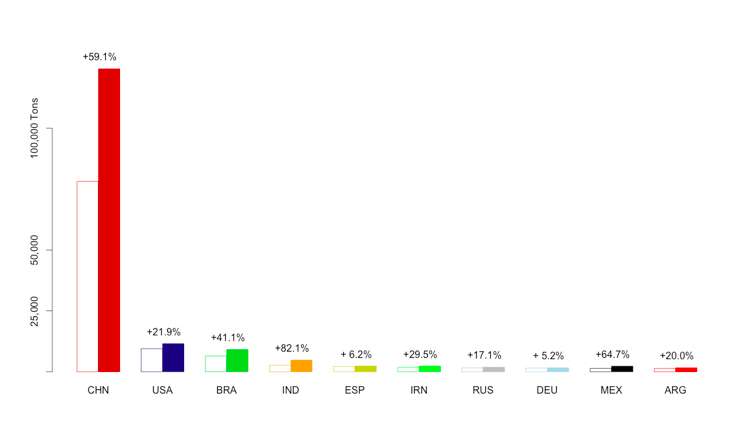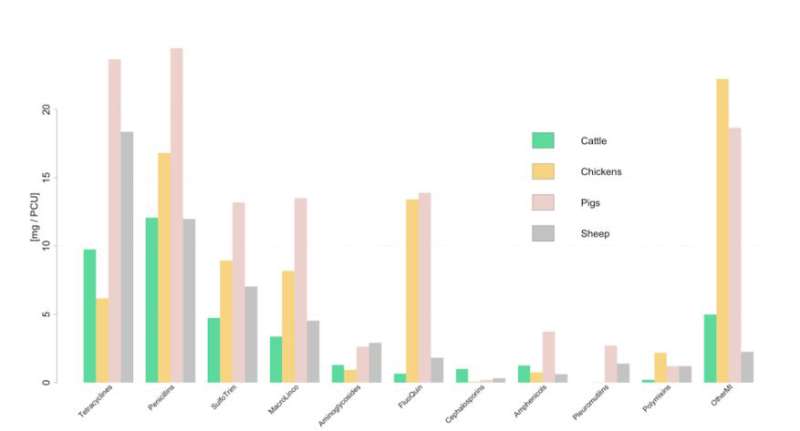New study highlights the impacts of a global strategy to reduce antibiotic consumption in food animal production

A new study in Science by researchers at the Center for Disease Dynamics, Economics & Policy (CDDEP) and partners analyzes and describes a comprehensive strategy for preserving antibiotic effectiveness by reducing antibiotic use in farm animals up to 80 percent globally by the year 2030. The study was co-authored by researchers at the Princeton Environmental Institute, Princeton University (USA); Institute of Integrative Biology, ETH Zurich (Switzerland); the Université Libre de Bruxelles (Belgium); and the Food and Agriculture Organization of the United Nations (Italy).
Overuse of antibiotics in animal food production is fueling a global health crisis in antibiotic resistance. Nearly 80 percent of all antibiotics used in the United States are given to food animals, mainly for growth promotion. Global antibiotic use in food animals outweighs human consumption by nearly three times. Left unchecked, antibiotic use in food animal production will rise 53 percent globally between 2013 and 2030.
"This scale up in antibiotics, primarily as a substitute for good nutrition and hygiene in livestock production, is simply unsustainable and will be devastating to efforts to conserve the effectiveness of our current antibiotics. We already face a crisis, but continuing to use medically important antibiotics for growth promotion in animals is like pouring oil on a fire," said the study's senior author and CDDEP Director Ramanan Laxminarayan.
In the Science study, researchers estimated the global impact of three interventions on reducing antibiotic use in animals. Together, these interventions could reduce animal consumption of antibiotics worldwide by up to 80 percent.

- Regulations capping the use of antibiotics in farm animals could achieve a 64 percent reduction in consumption.
- Limiting meat intake to the equivalent of one fast-food burger per person per day globally, could reduce antibiotic consumption in animals by 66 percent.
- Imposing a 50 percent user fee on the price of veterinary antibiotics could reduce consumption by 31 percent while generating revenues of US $ 1.7 billion to $4.6 billion per year, which could be used to spur drug development.
Globally, more than 131,000 tons of antibiotics were used in animals in 2013, the researchers found. By 2030, projected consumption will increase to more than 200,000 tons. The current top five users of antibiotics in food production, by country, are:
- China - 78,200 tons in 2013 (projected to increase 59 percent by 2030)
- United States - 9,476 tons (projected increase of 22 percent by 2030)
- Brazil - 6,448 tons (projected increase of 41 percent by 2030)
- India - 2,633 tons (projected increase of 82 percent by 2030)
- Spain - 2,202 tons (projected increase of 6 percent by 2030)

Even in many countries where current use of antibiotics for food production is relatively low, researchers predict that consumption will explode over the next dozen years. For example, in Uganda, which used 199 tons of antibiotics for food animals in 2013, consumption is projected to double by 2030. And consumption is projected to increase 215 percent in Vietnam, which used 515 tons of antibiotics for food production in 2013.
Last year's meeting on antimicrobial resistance (AMR) at the United Nations General Assembly recognized the inappropriate use of these drugs in animals as a leading cause of rising AMR. "We face a critical choice if we are to have antibiotics that work. We can restrict our meat consumption to a recommended daily intake, or adopt state-of-art livestock practices globally to reduce antibiotic consumption," study author Thomas Van Boeckel noted. "We cannot have both without putting the health of future populations at risk."
"A modest user fee on the price on veterinary antibiotics is appropriate given the magnitude of the threat and could discourage livestock rearing practices that involve using large quantities of antibiotics," Laxminarayan added. "We must act decisively and we must act now, in a comprehensive manner, to preserve antibiotic effectiveness," he said.
More information: T.P. Van Boeckel el al., "Reducing global antimicrobial use in food animals," Science (2017). science.sciencemag.org/cgi/doi … 1126/science.aao1495
Journal information: Science
Provided by Burness

















